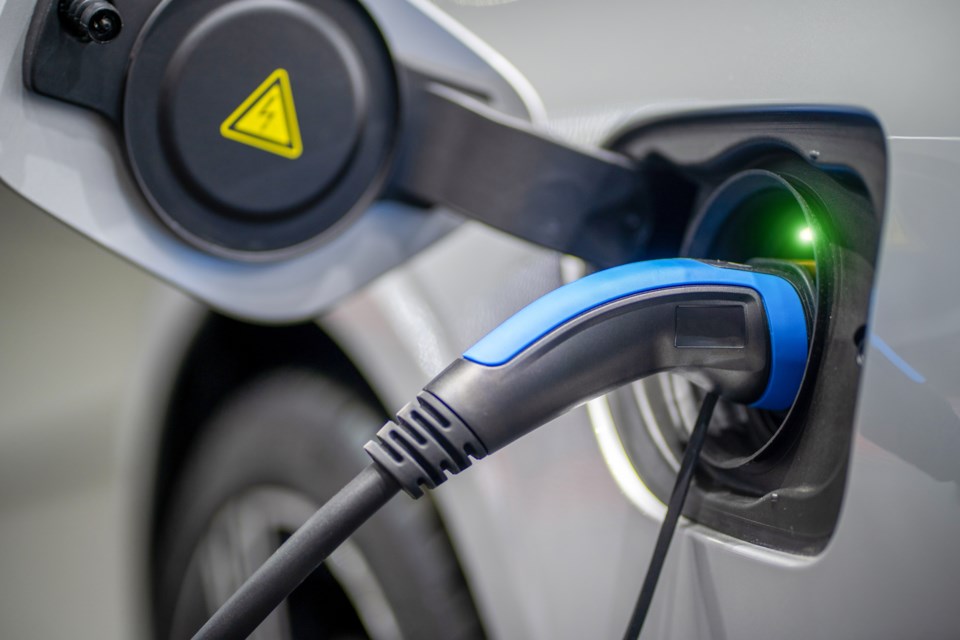The Canadian government says it will extend its national electric vehicle rebate program to 2025 with a $1.7-billion funding injection — but that money will not be available for used electric cars, despite an election promise to do so, according to the federal 2022 budget released Thursday.
During last year’s , the Liberal Party had promised to re-invest in the EV rebate program, and as part of that investment, add second-hand cars to the list of eligible vehicles.
But the promise to introduce rebates for used cars has not appeared in either the national emissions reduction plan unveiled last week or the released Thursday, said Mark Zacharias, a special advisor to the Simon Fraser University-based research group Clean Energy sa国际传媒.
“We think that would make them more accessible to a wider population,” he said.
ELECTRIC VEHICLE REBATE EXTENDED TO 2025, WILL INCLUDE MORE MODELS
The $1.7-billion investment will extend the $5,000 Incentives for Zero-Emission Vehicles (iZEV) program through to March 2025. The money will also expand the program so that more vehicle models are included — including vans, trucks and SUVs.
While the budget failed to detail an expansion of the rebate program to used vehicles, it did indicate Transport sa国际传媒 would provide more information “in the coming weeks.”
Zacharias says those announcements will likely detail how a four-year, $547.5-million investment will help businesses and governments switch their fleets to electric vehicles.
It’s not clear what vehicle models will be included in the medium- and heavy-duty category; it comes at a time when many companies and municipalities are looking for cheaper, base-model EVs.
“We’re seeing a lot of local governments are buying these,” said Zacharias.
A chief concern, said Zacharias: if “very expensive lifestyle vehicles” are included, it will reduce the overall funding available through the rebate program.
HOW EV REBATES CURRENTLY WORK IN CANADA
The sa国际传媒 government was the first Canadian province to waive provincial sales tax (PST) for second-hand EVs up to $75,000. But such breaks have not been applied at a federal level.
Currently, Ottawa provides a $5,000 rebate for anyone wanting to buy an electric vehicle with a base price under $45,000. But several provinces offer additional incentives, leading Clean Energy sa国际传媒 to describe the country's rebate scheme as "a tale of two sa国际传媒s."
At the top end, Quebec provides a combined $13,000 in electric vehicle rebates, whereas in the Prairie provinces, that drops to $5,000.
In sa国际传媒, where the province has provided over $173 million in electric vehicle rebates for light-duty vehicles since 2015, someone looking to buy a new electric car can get up to $8,000 in rebates.
The average EV owner in sa国际传媒 saves between $1,800 and $2,500 per year by ditching their gas-powered car, and even more over the long-term due to lower maintenance costs, according to the Ministry of Energy, Mines and Low Carbon Innovation.
Those savings quickly add up. Over the lifetime of an electric Hyundai Kona — sa国际传媒’s second best-selling EV in 2021 — a driver can expect to save $15,000 compared to the equivalent gas-powered model. That’s before any rebates, according to a recent report from Clean Energy sa国际传媒.
BOOST TO CHARGING NETWORK COMING
Outside of the rebate program, the federal budget also laid out another $400 million over five years to fund the deployment of ZEV charging stations in suburban and remote communities throughout sa国际传媒. In addition to electric, ZEVs include gas-hybrids and hydrogen fuel cell technologies.
Another $500 million of already earmarked money will come from the sa国际传媒 Infrastructure Bank to build urban and commercial charging and refuelling infrastructure for ZEVs.
The federal government says it has helped build 1,500 charging stations across the country since 2015 when it came to power. It has plans to raise that number to 50,000.
Zacharias says how and where those charging stations are built matter, especially as many urban areas move to densify living.
“We’re pleased at what we’re seeing on electric vehicles,” he said. “But we would like to see more funding for charging in apartments and condos.”


